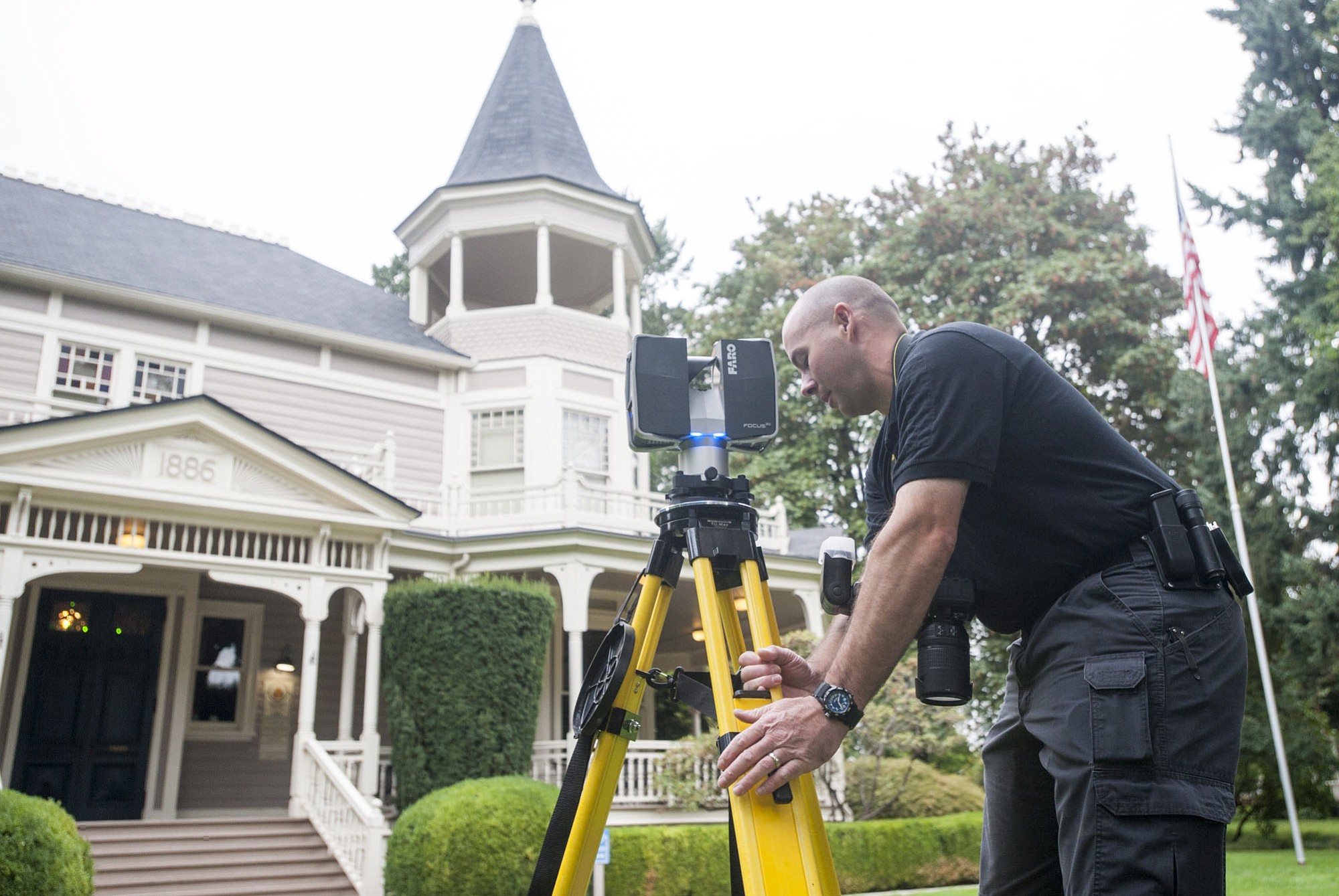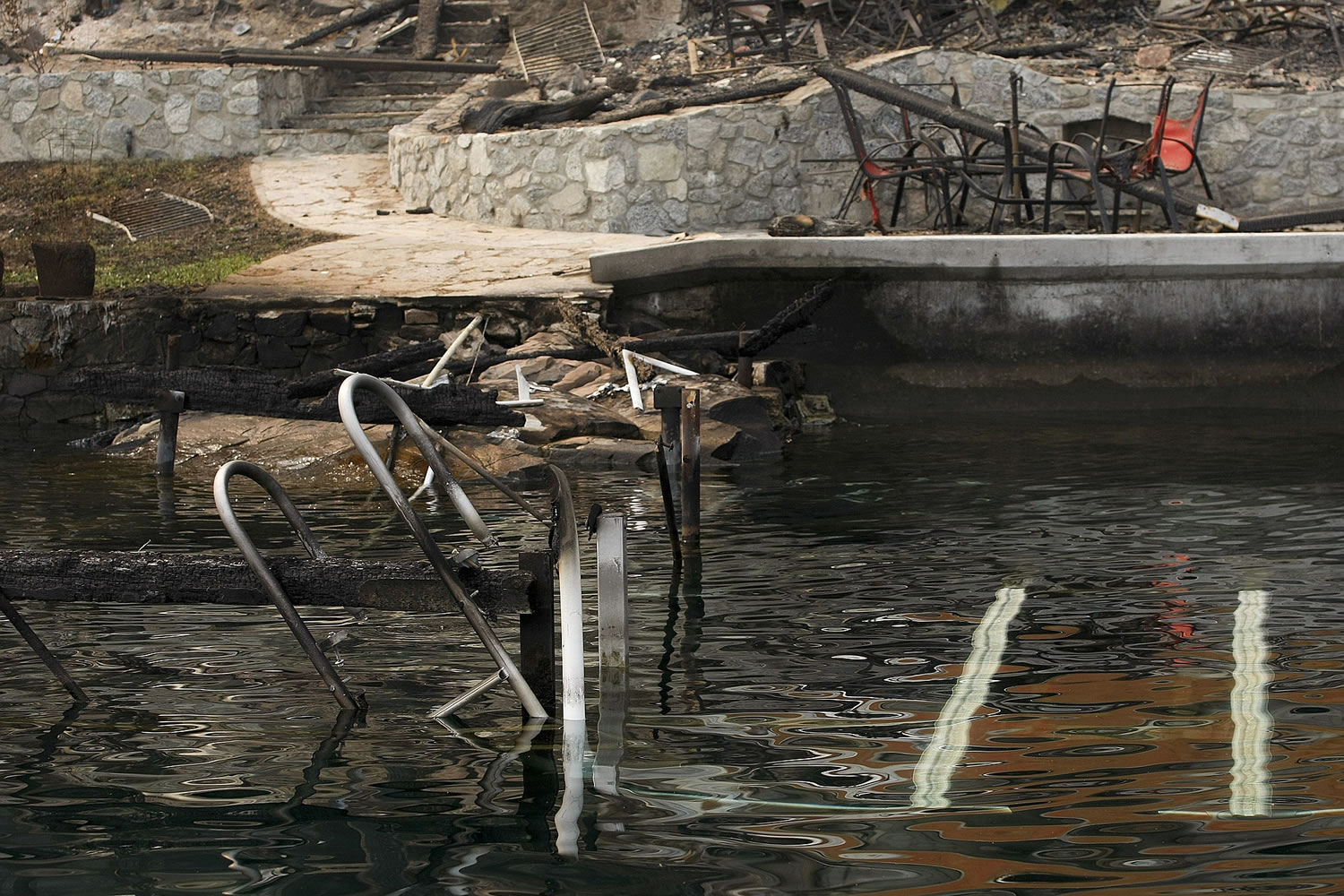When it comes time to collect evidence at the scene of a crime, detective Joe Swenson said that sometimes you don’t know what’s important until later.
“But, the scene is gone, cleaned up,” said Swenson, a crime scene detective with the Clark County Sheriff’s Office Major Crimes Unit. “With this, I can go back to the scene any time I want.”
“This” is a 3-D laser scanner that documents and measures everything within about a 400-foot radius from the scanner. By taking about 25 scans at each scene, Swenson is able to have an interactive picture of the scene at his fingertips.
“While I’m out at the crime scene doing my thing, other investigators are talking to suspects, witnesses or whoever … we have a lot of contact back and forth, but they’re learning things that I don’t know about,” he said. “There can always be things that I just don’t learn until later on.”
Swenson said the piece of equipment makes crime investigations more accurate.
After processing a scene of a recent officer-involved shooting, investigators didn’t learn about a vehicle that was struck by a bullet until days later. When Swenson visited the scene again from the image on his computer, he understood the bullet’s trajectory.
“I can totally see how that would have hit (the vehicle) judging by the angle that it hit and the location of where the car was and where the officer was standing. It totally makes sense,” he said.
Swenson said he’s processed 29 crime scenes with the scanner but only once presented the interactive evidence at a trial. From his experience, he said, he can see the potential for helping jurors better understand what happened.
With the laser scanner, Swenson can go beyond photos and videotape — he can drop jurors into the virtual scene, allowing them to see it all for themselves.
For example, he can make a “fly-through” video, showing the path someone took through a crime scene from the person’s perspective.
“It just captures it as it is,” he said. “It’s invaluable.”
He first saw the device in action at a conference, where the presenter took a scan of the auditorium and showed the results: a very detailed image of the crowd and room, down to its exposed beams.
He drafted a proposal, and the sheriff’s office purchased the $60,000 piece of equipment in December 2012 — becoming the first agency in Southwest Washington to use the upgraded technology.
The device spins a laser and camera in every direction, hitting objects and bouncing back with captured information such as the X, Y and Z coordinates. Swenson said he has the device set so that each scan captures about 44 million points that form a 3-D representation of its surroundings.
“I can get aerial photos without ever leaving the ground,” he said.
Before having the laser scanner, Swenson would make a diagram of a crime scene with pencil, paper and measuring tape; there’s more room for error with rounding to nearest 1/10th of an inch when measuring something such as the dimensions of a porch.
The math, he said, “never comes out the same; it never matches up.”
With an accuracy of plus or minus 2 millimeters from up to 25 yards away, Swenson can better measure distances with a few clicks of his mouse.
“Just being able to have so much data from spending 45 minutes scanning,” he said. “It’s pretty impressive.”
When there is an officer-involved shooting, Swenson can even place himself in the same spot that the officer was when he fired his weapon. Or, if a witness makes a statement describing a scene, detectives can verify if what they say is true.
“It’s really phenomenal to be able to see what somebody else could have seen,” he said.





